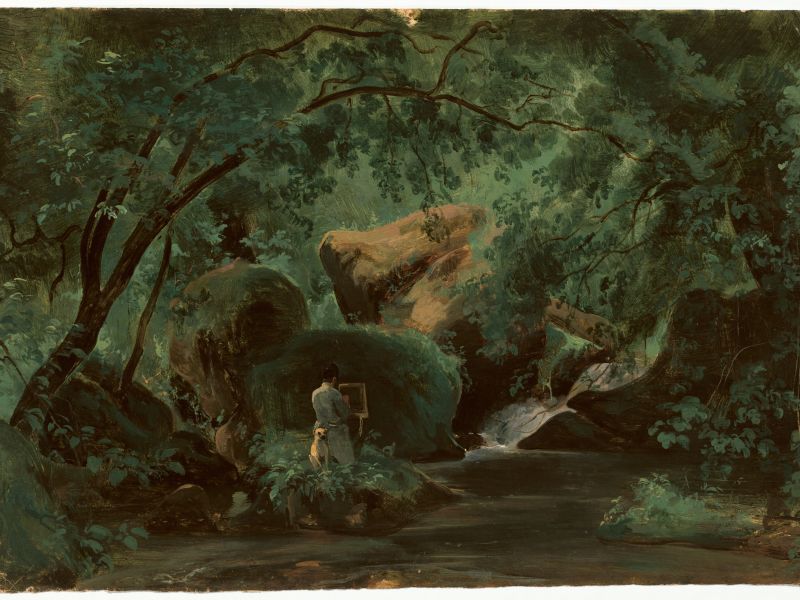Eugène Decan Corot at His Easel, Crécy-en-Brie

Smoking a pipe, dressed in his blue smock, and balancing on a slender-legged folding chair, Corot epitomises the plein air tradition. As an ornithologist accustomed to gathering detailed species’ data, the painter’s concentration is familiar. It is easy to imagine the chorus of bird songs and calls that must have enveloped Corot, and I wonder, standing in the still silence of the gallery, how those sounds would have influenced his brush strokes.
Painted in 1873, Decan’s sketch records a time when the architecture of contemporary nature conservation was almost unimaginable. Sixty years after Rachel Carson’s Silent Spring was published a revolutionary call to action to protect wildlife, bird song drains from habitats all over Europe. Conservation gains exist, of course, and an astonishing network of more than 27,000 protected breeding sites for birds now covers 18% of the land and 7% of marine areas under the EU Birds and Habitats Directives.
At the same time, the 2021 Red List of European Birds revealed that 13% (71 of 544 species) are threatened, including many migrants. It is hard not to listen for their voices echoing through the Fitzwilliam.
John Fanshawe
BirdLife International & Cambridge Conservation Initiative
Discover other viewpoints related to this
Sign up to our emails
Be the first to hear about our news, exhibitions, events and more…


